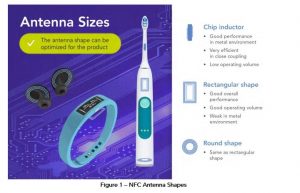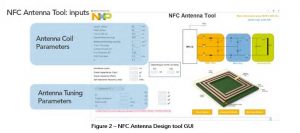NFC Readers
NFC readers are the active components in NFC transactions. They can read and write cards and tags, interact with NFC phones and enable communication from device to device. We have the broadest portfolio of high-performance NFC readers, fully supporting the MIFARE® ICs.
Depending on your system architecture, choose from one of these three reader types:
- Programmable NFC Controller: These highly integrated devices combine an NFC frontend with a freely programmable 32-bit Arm® Cortex®-M0 microcontroller. They are the optimal solution for very compact footprints and function as your main system microcontroller.
- NFC controller with integrated firmware: These plug-and-play solutions combine an NFC frontend with a 32-bit Cortex-M0 microcontroller equipped with integrated firmware, and are optimized for use with application processors. They come with Linu, Android, and WinIoT drivers, and include an NCI interface.
- NFC Frontend: These NFC devices are the most flexible way to add NFC connectivity to a system. The NFC stack runs on the separate system MCU. All our NFC frontends are supported by our NFC Reader Library, so design-in is fast and easy.
Recommended NFC Reader ICs
| Part Number | NFC Modes | Protocols* | Output Power | LPCD* performance | Contact Reader ISO7816 | RF transmitter supply voltage | Temp range | Integrated MCU |
|---|---|---|---|---|---|---|---|---|
| PN7462AU Programmable NFC microcontroller |
Full NFC | A, B, F, V, I | 1.3 W | ++ | 3 to 5.5 V | -40 to +85°C | Cortex-M0 160 kB | |
| PN7362AU Programmable NFC microcontroller |
Full NFC | A, B, F, V, I | 1.3 W | ++ | – | 3 to 5.5 V | -40 to +85°C | Cortex-M0 160 kB |
| PN7360AU Programmable NFC microcontroller |
Full NFC | A, B, F, V, I | 1.3 W | ++ | – | 3 to 5.5 V | -40 to +85°C | Cortex-M0 80 kB |
| PN7150 NFC controller with integrated FW* |
Full NFC | A, B, F, V | 0.9 W | ++ | – | 2.7 to 4.75 V | -30 to +85°C | Cortex-M0 fixed FW |
| PN7120 NFC controller with integrated FW* |
Full NFC | A, B, F, V | 0.5 W | ++ | – | 3.1 V | -30 to +85°C | Cortex-M0 fixed FW |
| PN5180 High-performance full NFC frontend |
Full NFC | A, B, F, V, I | 1.3 W | ++ | – | 2.7 to 5.5 V | -30 to +85°C | – |
| CLRC663 plus High-performance multiprotocol reader frontend |
Reader/Writer | A, B, F, V, I | 1.9 W | +++ | – | 2.5 to 5.5 V | -40 to +105°C | – |
| MFRC630 High-performance reader frontend for MIFARE and NTAG® products |
Reader/Writer | A | 1.3 W | + | – | 3 to 5.5 V | -25 to +85°C | – |
| SLRC610 High-performance reader frontend for ICODE® products |
Reader/Writer | V,I | 1.3 W | + | – | 3 to 5.5 V | -25 to +85°C | – |
NFC Antenna Design made easy
Learn how NXP is making it easier for designers to get one step ahead in their NFC products with our new NFC Antenna Design Tool.
The most crucial part about designing an NFC reader is its antenna. The optimum read range and reliability of your NFC device highly depends on the underlying antenna design.
Planning your requirements is always a good way to start
The right antenna depends on the application’s requirements. Start by asking yourself what are the “must-have” requisites and then add the requirements that are not essential but “nice to have.” Next, you also have to consider the form factor and features of your end product in relation to the available space and boundary conditions for the NFC antenna. Starting with such a list should help you to better understand the antenna design you need. For example, if you want to have maximum read range, you can’t go for a very low power design at the same time.
The size of an RFID/NFC antenna defines the operating distance
In general, the larger your antenna size, the longer the reading distance. Similarly a smaller antenna will give you a shorter read range. However, sometimes a small antenna with a long operating distance chip can also have longer read range. So in principle, your antenna size should be the perfect matched reader and antenna.
There are different shapes of NFC antennas. Each one of them has their own specific purpose.
- Chip Inductor: The Chip Inductor antennas are very efficient in close coupling, and perform better in a metal environment.
- Rectangular NFC Antenna: Rectangular NFC antennas provide good overall performance with good operating volume. They can become weak in a metal environment.
- Round NFC Antenna: The Round NFC antenna has similar features as the rectangular antennas with good overall performance and operating volume. The round antennas are particularly useful for circular and round wearable devices such as wristbands, watches and more.
So which one is the right shape for you? Well, the answer is that there is no single best antenna for each use case. If your antenna gets larger than the optimum size, then the performance might deteriorate.
When trying to get the best performance for your NFC antenna, you might wonder how many turns you should choose. However, in practice the number of turns has no impact on the coupling. You can’t really get more operating distance by increasing or decreasing the number of turns.
Get one step ahead with NFC Antenna Design Tool
A good antenna design from the start can help you to save time in the overall design process, consequently reducing time-to-market. To help you get started, NXP has launched a new NFC Antenna Design Tool. The tool has a variety of parameters, which you can modify to simulate your desired antenna design principle. You can enter values in the Antenna Coil Parameter area to define the outer dimension of the antenna such as length, width, track thickness, etc.
With these parameters, you can now do the antenna synthesis. The antenna synthesis basically derives the key parameters for the antenna coil, which includes mainly the inductance, and also other variables such as the capacity, resistance (loses of the antenna), self-resonance frequency (as an estimation to see whether the antenna can be easily tuned or not).
Once you have the parameters for the antenna coil, you can simply choose the Reader IC, which will give you the recommended values for the Antenna Tuning. Then, by doing the tuning you can obtain the starting values for the tuning circuitry. And, you are done!
Next step – NFC Antenna Design Hub
So here we discussed some of the common concerns about NFC antenna design. To get more in-depth knowledge, you can visit the new NFC Antenna Design Hub. This hub is a comprehensive portal of resources, application notes, on-demand training and more materials to provide you everything you need to learn more about NFC antenna design. You can also download the NFC Antenna Design Tool for free!
Relevant Products


